A Content Management System (CMS) is a powerful software tool that empowers individuals and teams to create, manage, and publish website content without requiring extensive technical expertise.
Key functions of CMS are content creation, organization, collaboration and publishing.
- Content Creation and Editing: Easily write, format, and edit text, images, and other media.
- Organization: Structure your website content with pages, categories, and menus.
- Publishing: Schedule and publish content with a few clicks.
- Collaboration: Enable multiple users to work on the website simultaneously.
With a CMS, you can create and maintain a professional website, whether it’s a simple blog, a complex e-commerce platform, or anything in between.
Geekflare has researched and listed the best Content Management Systems (CMS) based on features such as user interface, e-commerce functionalities, integration possibilities, and pricing.
- WordPress – Best for Blogging
- Drupal – Best for Complex Sites and Security Needs
- Joomla – Best to Build Community-driven Websites
- TYPO3 – Best Enterprise Sites with Multilingual Needs
- Concrete CMS – Best for User-Friendly In-Context Editing
- Magnolia – Best for Enterprise Cloud CMS
- Umbraco – Best for .NET Developers
- Kentico – Best for Hybrid CMS Approach
- Adobe Commerce – Best for Large-scale E-commerce
- Shopify – Best for E-commerce Beginners
- PrestaShop – Best for Open-Source and International E-commerce
- Contentful – Best for API-driven Content Delivery
- Storyblok – Best for Visual Editing and Developer Experience
- Contentstack – Best for Scalable Headless CMS
- Directus – Best Open Source Headless CMS
- Webflow – Best No-Code Web Design with CMS Capabilities
- Appy Pie Website Builder – Best for Beginners and Budget-Focused Needs
- Grav – Best for Flat-File CMS and Developer Speed
- Sitecore – Best for Enterprise Personalization and Omnichannel
- Sitefinity – Best for Marketing Automation and E-commerce Integrations
- Crownpeak – Enterprise-level Digital Experience Management (DXM)
- ButterCMS – Best API-first CMS for Developers
- Hubspot Content Hub – Best for Integrated Marketing and CRM
- Show less

WordPress
Best for Blogging
- Plugins/Add-onsExtensive
- Multilingual Capabilitiesvia Plugins
- Customer SupportEmail, Live Chat
About WordPress
WordPress is a well-known CMS used by popular sites like The Walt Disney Company, The New York Times, Geekflare, Forbes, and CNN.
WordPress is user-friendly and highly customizable, with 12,000+ themes and 59,000+ plugins. Its SEO-friendly structure and mobile-responsive designs help improve search engine rankings and ensure websites perform well on all devices.
The active WordPress community provides robust support and resources, making it suitable for blogs, websites, and online stores. Due to its stable performance and regular security updates, WordPress is one of the best CMS platforms for scaling your online website or business.
For website development, users have Gutenberg, WordPress’ native page builder that creates stunning websites. Alternatively, WordPress integrates with popular page builders like Elementor, Divi, Oxygen, Beaver, and more to help you create your websites.
WordPress is an open-source and DIY solution, which you can download from wordpress.org. However, if you are not ready to host it yourself, you can avail WordPress hosting from wordpress.com.
WordPress Features
Offers security through a multi-level security approach, including malware scanning and removal, SSL/TLS encryption, real-time backups, and DDoS protection.
Provides easy site creation, management, and growth through the Jetpack App available on Android and iOS.
Comes with dedicated tools for design and editing, marketing, monetization, performance, etc.
WordPress Pros/Cons
SEO-friendly architecture speeds up websites and helps in rankings.
Wide variety of themes, plugins, and blocks to customize your website.
Seamless integration with WooCommerce.
Free to download and use.
Sometimes, the core updates lead to website crashes.
Since WordPress is open-source, you must rely on a reliable security plugin.
Too many plugins slow down website.
WordPress Pricing
WordPress has 5 pricing plans, the most popular of which are listed below.
| Plan | Price | Offering |
|---|---|---|
| Starter | $4/month | Free domain for 1 year, access to premium themes, fast DNS with SSL, etc. |
| Explorer | $8/month | Allows upload of 4K videos, unlimited automatic shares in social media, site activity log, etc. |
| Creator | $25/month | Priority 24/7 support allows installation of plugins and themes, unrestricted bandwidth, etc. |

Drupal
Best for Complex Sites and Security Needs
- Plugins/Add-onsMajor
- Multilingual Capabilities100 languages
- Customer SupportEmail, Forum
About Drupal
Drupal is a leading open-source CMS that is highly flexible and customizable. Its modular design offers 40,000+ free modules for easy website customizations. It offers powerful content management tools, including custom content types, in-place editing, and content versioning.
Drupal supports high-traffic websites and complex web applications, making it a preferred choice for large organizations, governments, shopping, and media companies.
Drupal offers solid security features, with its large community continuously reviewing and patching code. It provides out-of-the-box multilingual support for more than 100 languages.
Drupal Features
Provides various modules (40,000+) and themes (2500+).
Offers accessibility through built-in multilingual capabilities.
Has an active community of over 1 million developers for support.
Drupal Pros/Cons
Strong community and ecosystem of developers and contributors.
Out-of-the-box multilingual capabilities for translating website content.
Easily integrates with third-party tools and APIs.
Steeper learning curve compared to WordPress.
While it provides major plugins, there is a limitation on the variety.
Requires technical expertise to set up and maintain.
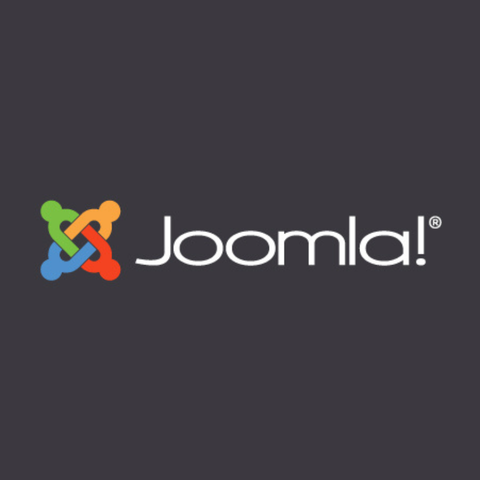
Joomla
Best to Build Community-driven Websites
- Plugins/Add-onsMajor
- Multilingual Capabilities70 translation packs
- Customer SupportLive Chat
About Joomla
Joomla, an open-source CMS founded in 2005, is managed by Open-Source Matters, Inc. It uses PHP and a model-view-controller framework and supports MySQL, MS SQL, and PostgreSQL databases. Joomla’s global community has developed over 5,400 extensions, which are available in its directory.
Joomla powers nearly 2 million active websites, from corporate sites and online magazines to e-commerce stores and community portals. Its strong SEO and security features and a wide library of extensions and themes make it a popular choice for businesses and organizations.
In summary, Joomla is a robust and flexible CMS suitable for diverse web projects. Its extensive community support, rich extension library, and powerful features ensure it meets the needs of businesses and organizations of all sizes.
Joomla is free to download and use. However, you will have to pay for hosting and a domain name. Using premium themes or plugins will increase your expenses.
Joomla Features
Supports a WYSIWYG editor for real-time editing.
Offers advanced user management and permission levels.
Provides responsive, mobile-friendly layouts for best website performance.
Joomla Pros/Cons
Provides language packages for 70+ languages.
A large and active community of developers for support.
Open-source and free to use.
Limited plugins and add-ons make it difficult to customize.
The administrative interface is more complex in terms of navigation.
No built-in page builder to create websites.

TYPO3
Best Enterprise Sites with Multilingual Needs
- Plugins/Add-onsLimited
- Multilingual CapabilitiesMajor
- Customer SupportEmail
About TYPO3
TYPO3 is an open-source CMS written in PHP. Due to its advanced features like editorial workplace, workflow, frontend editing, scalability, and maturity, it is perfect as an enterprise-level CMS for e-commerce website.
TYPO3 is a powerful and flexible CMS that is well-suited for large-scale, enterprise-level websites and applications, especially in Europe. Its advanced features, scalability, and strong community support make it a compelling choice for organizations seeking a robust and customizable content management solution.
TYPO3 Features
Provides advanced page caching.
Comes with a fully integrated e-commerce platform and personalization.
Separates content and layout, allowing for flexible template management.
TYPO3 Pros/Cons
Modular architecture offers high scalability and flexibility.
Offers DAM (Digital Asset Management) integration.
Provides adaptable, granular user access rights for better control during collaboration.
Its flexibility and features make it challenging for beginners.
Limited number of third-party integrations.
Due to a smaller community of developers, there might be support issues.

Concrete CMS
Best for User-Friendly In-Context Editing
- Plugins/Add-onsLimited
- Multilingual Capabilities12+ languages
- Customer SupportTicket, Form
About Concrete CMS
Concrete CMS, formerly concrete5, is a content management system popular for its in-context editing. It allows users to manage website content directly on the page rather than a separate admin interface.
Concrete CMS offers comprehensive built-in functionality, eliminating the need for additional extensions. Its collaboration and permissions system provides fine-tuned control over access and content approvals.
The platform ensures robust security and compliance, including ISO 27001 certification and HIPAA compliance. Version control and change tracking are available for all content edits. An extensive developer API supports custom functionality through add-ons.
With a large and active community of 250+ contributors, Concrete CMS is trusted by organizations like the U.S. Army and Milwaukee Mitchell International Airport.
Concrete CMS Features
Integrates with various cloud services for added functionality.
Allows for real-time editing of website content, enabling quick updates and changes.
Offers a wide variety of extensions to add more functionalities to your website.
Concrete CMS Pros/Cons
Modular editing system for non-technical users.
Active user community and support forums.
Easy integrations and allows expansion of functionality through third-party apps.
Provides only two free themes.
Since it has a smaller community, it is difficult for users to get solutions.
E-commerce plugins for integration with platforms apart from Shopify are missing.
Concrete CMS Pricing
Concrete CMS has three pricing plans, which are listed below.
| Plan | Price | Offering |
|---|---|---|
| Starter | $4.99 | 1 site editor, configuration support, 10,000 page views per month, 2 GB of storage space. |
| Business | $19 | 5 site editors, nightly backup, 50,000 page views per month, 20 GB storage space |
| Custom SLA | Custom | Unlimited support questions, continuous backup & restoration, large data stores, etc. |

Magnolia
Best for Enterprise Cloud CMS
- Plugins/Add-onsLimited
- Multilingual Capabilitiesvia plugins
- Customer SupportTicket
About Magnolia
Magnolia is one of the best cloud CMS for large enterprises and organizations. It is based on the Content Repository API for Java (JCR) and was developed by Magnolia International Ltd., a company based in Basel, Switzerland.
Magnolia excels in omnichannel content delivery, managing content across multiple websites, brands, and channels from a single platform. It offers tools for personalizing digital experiences and optimizing content performance.
Magnolia provides generative AI to automate tasks like generating copy, metadata, and image tagging. Its advanced features and powerful workflow tools ensure brand consistency and control.
Magnolia CMS’s key strength is security. It holds key security certifications like ISO 27001 and SOC 2 and national certifications such as ENS (Spain) and NIST (US).
Magnolia Features
Has headless CMS capabilities for omnichannel content delivery.
Comes with a modular design, which makes it easy to add or remove functionality as needed.
Provides multilingual and multi-site support.
Magnolia Pros/Cons
Native AI integration for content creation and task automation.
Additional support for Google Translator, AT Language Solutions, DeepL, and Microsoft Translator.
Native VR, AR, and MR capabilities.
There is a steeper learning curve because more functionality needs expertise.
Paid plans are costlier than most other CMSs.
Limited add-ons are available.
Magnolia Pricing
Magnolia offers three plans, which are listed in the table below.
| Plan | Price | Offerings |
|---|---|---|
| Open-source | Free | Core content management capabilities, standard support, standard availability, and community learning. |
| Self-hosted DXP | Starts at $3,000/mo | High availability development, multisite management, dedicated customer success program, and unlimited non-production environments. |
| Cloud DXP | Custom | Pre-configured CI/CD pipeline, platform enablement and onboarding, enterprise platform, and product SLA. |

Umbraco
Best for .NET Developers
- Plugins/Add-onsVery Limited
- Multilingual CapabilitiesMajor
- Customer SupportForm, Email
About Umbraco
Empower your digital vision with a leading open-source CMS built for developers. Known for its unmatched flexibility and customization, Umbraco enables you to create unique websites and web applications that truly reflect your brand.
Whether you’re a small business or a large enterprise, Umbraco offers a free, open-source platform and premium support plans to meet your unique needs.
Umbraco Features
Supports embedding of links, images, sound, video through Umbraco WYSIWYG editor.
Developer-friendly with robust API support
Built-in multilingual support
Umbraco Pros/Cons
The platform is specially designed for developers.
Built-in support for multiple languages.
Offers powerful cloud-based hosting plans.
Relatively small plugin ecosystem
Some users have reported issues with XML caching and XSLT scripting.

Kentico
Best for Hybrid CMS Approach
- Plugins/Add-onsMajor
- Multilingual CapabilitiesLanguages application
- Customer SupportEmail, Form, Ticket
About Kentico
Kentico should be on your list if you are looking for a headless CMS. It is essentially a digital experience platform (DXP) that is easy to use and packed with essential low-code, no-code tools.
Kentico is designed mainly for marketing teams that want to craft memorable customer journeys to boost website engagement without depending on developers. It integrates SEO, email marketing, and visitor analytics to enhance digital marketing efforts.
Kentico Xperience is ideal for managing complex content hierarchies and multilingual websites. Its features include content versioning, hierarchical structure, and efficient workflow management. The platform offers customizable templates and responsive design for a seamless user experience.
Kentico Xperience includes robust e-commerce features like product management, payment handling, shopping cart, product catalog, inventory management, and order processing. It supports integration with third-party applications and CRMs.
Kentico Features
Supports multiple languages, currencies, and tax rules to handle a global customer base.
Comes with a wide range of pre-built website templates and widgets for custom website design.
Offers native digital marketing features for marketing campaigns.
Kentico Pros/Cons
Variety of hosting options – On-premise, Cloud, and Hybrid.
Headless CMS functionality enables faster and more flexible implementation.
Built-in e-commerce capabilities.
It is expensive for small businesses and individuals.
Limited add-ons and native integrations make it difficult to get full functionality.
Kentico Pricing
Xperience by Kentico is available on subscription. Users are provided with an option to buy either as SaaS or a self-managed/license-only solution.
| Plan | Price | Offerings |
|---|---|---|
| SaaS (Standard Tier) | $2,050/mo | Cloud hosting, one website channel. |
| SaaS (Advanced Tier) | $2,610/mo | Cloud hosting, multiple digital channels. |
| License-only (Standard Tier) | $1,050/mo | Self-managed, one website channel. |
| License-only (Advanced Tier) | $2,110/mo | Self-managed, multiple digital channels. |
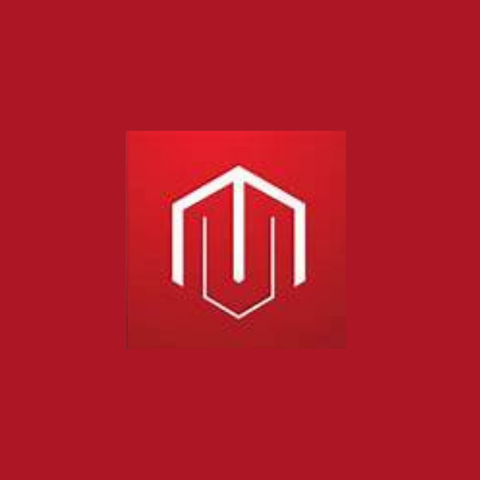
Adobe Commerce (Magento)
Best for Large-scale E-commerce
- Plugins/Add-onsMajor
- Multilingual CapabilitiesLanguages packs
- Customer SupportTickets
About Adobe Commerce
Adobe Commerce, formerly Magento, is a top e-commerce platform for B2B businesses. It offers flexible hosting options, including on-premises and cloud hosting. Integration with other Adobe products like Analytics and Experience Manager provides data-driven insights and personalization.
Designed for scalability, Adobe Commerce includes powerful developer tools for unlimited growth. Its intuitive, customizable interface allows merchants to personalize storefront designs. Mobile responsiveness ensures a seamless shopping experience across devices, and robust security features protect customer data.
Adobe Commerce offers API availability, customizable templates, and third-party integrations for optimal storefront creation. Comprehensive reporting and analytics tools track sales and customer behavior. The platform supports various payment gateways, including credit cards, PayPal, Venmo, Apple Pay, Google Pay, and voucher cards.
Adobe Commerce integrates with Adobe Sensei, Adobe’s artificial intelligence and machine learning platform, to provide advanced personalization and optimization features.
Adobe Commerce Features
Provides frictionless integration with other Adobe products.
Offers a unified platform for multi-site management.
Has an extensive gallery and extensions.
Adobe Commerce Pros/Cons
Offers AI capabilities for boosting conversions.
Provides robust security expertise by Adobe.
Has powerful e-commerce capabilities.
Very few themes are available on the Adobe Marketplace.
No fixed pricing plans to determine cost.
Less experience users will have a steep learning curve due to the complexity in management and resource-intensiveness.

Shopify
Best for E-commerce Beginners
- Plugins/Add-onsMajor
- Multilingual CapabilitiesTranslate & Adapt app
- Customer SupportChat
About Shopify
Shopify is a cloud-based e-commerce platform for building, managing, and growing online businesses. It integrates with drop-shipping apps like DSers, Zendrop, and Spocket to enhance online sales.
Shopify’s user-friendly admin interface ensures efficient store management for beginners. It provides 200+ customizable, responsive themes for creating custom store designs. Its built-in SEO features include auto-generated canonical tags, robots.txt, sitemap.xml, and title tags with your store name.
Shopify provides robust security features, including SSL certificates and fraud prevention tools like Shopify Protect and Card Testing Protection. Advanced analytics offer valuable insights into sales and customer behavior.
Shopify supports 100+ payment gateways and various solutions, such as PayPal, Razorpay, Amazon Pay, Google Pay, Apple Pay, Affirm, Klarna, and credit cards. It has a native payment gateway called Shopify Payments.
Shopify Features
Comes with a built-in payment system, SEO features, fraud detection tools, and all the tools you need for e-commerce business.
Offers a wide variety of themes and plugins are available to customize your online store.
Provides in-depth analytics on sales, customer behavior, and inventory management.
Shopify Pros/Cons
Offers integrated Point of Sale (POS) system.
Native tools for advertising and marketing campaigns.
Most beginner-friendly e-commerce platform.
Monthly fees and third-party apps can lead to higher overall expenses.
Fees are higher if you use other payment solutions than Shopify Payments.
Theme customizations costs extra.
Shopify Pricing
Shopify offers four plans with free trials. Payment processing rates decrease as you go for higher plan. For complex businesses, Shopify has a Plus plan starting at $2,300 per month. Here are the monthly prices of annual plans.
| Plan | Price | Offerings |
|---|---|---|
| Basic | $29/mo | Up to 77% shipping discount, 10 inventory locations, 24/7 chat support, localized global selling (3 markets), and POS lite. |
| Shopify | $79/mo | Everything in the Basic plan, and up to 88% shipping discount and insurance, and 5 additional staff accounts. |
| Advanced | $299/mo | Custom reports, in-depth analytics, add additional markets, 15 additional staff accounts, and 10X checkout capacity. |

PrestaShop
Best for Open-Source and International E-commerce
- Plugins/Add-onsLimited
- Multilingual Capabilitiesvia Crowdin
- Customer SupportChat, Email, Phone
About PrestaShop
Launch your online store with PrestaShop, the versatile and customizable e-commerce CMS trusted by thousands of businesses worldwide. Whether you’re starting small or aiming for global reach, PrestaShop offers the tools and flexibility to grow your business.
Whether you’re a seasoned developer or a first-time store owner, PrestaShop’s comprehensive admin interface and extensive Addons marketplace make it easy to create and manage your dream online store. PrestaShop integrates with payment gateways, including Mollie, Stripe, PayPal, Amazon Pay, and more.
PrestaShop Features
Enhance your store’s functionality with over 4,000 modules for marketing, SEO, multichannel selling, and more.
Has a unified dashboard for multi-site management.
Protect your business and customers with PCI compliance, IP whitelisting, and additional security add-ons.
PrestaShop Pros/Cons
Has built-in SEO capabilities.
Provides native multilingual and multi-currency support
Allows unlimited product listings.
Limitations on modules reduce functionality.
The hosted plan offers limited bandwidth.
PrestaShop Pricing
| Plan | Price | Offerings |
|---|---|---|
| Classic | Free | Self-hosted, you got to install and setup on your own hosting. |
| Hosted | €24/mo | Hosting with Gandi (50GB), automatic VAT calculation, GDPR compliance, and 6-day customer support via email or phone. |

Contentful
Best for API-driven Content Delivery
- Plugins/Add-ons110+
- Multilingual Capabilitiesvia Locales page
- Customer SupportTicket
About Contentful
Contentful is a headless CMS designed for standardizing and synchronizing content across multiple brands, regions, and channels. It features a comprehensive content graph that centralizes all content assets, including images, text, and articles.
Contentful separates content management from content delivery, enabling publication across multiple digital channels and devices. Content is delivered via APIs, offering greater flexibility and scalability.
Contentful’s API-first design includes robust Content Delivery and Content Management APIs. This allows developers to access and manipulate content programmatically, making it highly customizable and easy to integrate with other systems.
Contentful offers advanced content modeling capabilities, allowing teams to define custom content structures and relationships. This feature is more robust than traditional CMS platforms. It integrates AI-powered features, like the Content-Type Generator, to design content models and streamline workflows, enhancing the productivity of content teams.
Contentful Features
Comes with built-in multi-site and multilingual capabilities.
Offers AI-powered tools to streamline content creation.
Provides unified management of all content assets.
Contentful Pros/Cons
Shared workspace with concurrent revisions and updates.
Visual structure for content modeling.
Robust API support for delivering content to any digital channel.
May require technical expertise to set up and integrate with other systems.
Has costly paid plans.
Contentful Platform Pricing
Contentful has two other pricing plans apart from its free version, which are as below.
| Plan | Price | Offerings |
|---|---|---|
| Free | Free forever | 5 users, 2 locales, 1M API calls/mo, structured content, 1 intro space, and more. |
| Basic | $300/mo | 1 Intro Space, plus an optional upgrade to Medium Spaces, 20 users, 4 locales, 2M API calls/mo, and 0.75TB/mo CDN bandwidth. |
| Premium | Custom Pricing | Custom number of users, roles, and locales, unlimited API calls/mo, dedicated customer success, custom amount of CDN bandwidth, and Contentful Studio compatibility. |

Storyblok
Best for Visual Editing and Developer Experience
- Plugins/Add-onsLimited
- Multilingual CapabilitiesMajor
- Customer SupportLive Chat
About Storyblok
Storyblok is a cloud-native headless CMS designed for flexibility and integration. It lets developers build and publish content across any service or technology. Marketers can independently create and scale content using its visual editing interface, collaborative tools, and custom workflows.
Storyblok’s API-first design ensures seamless integration with any front-end framework or technology. It includes AI-powered tools to enhance content personalization and automation.
Storyblok handles increasing content and traffic without compromising performance or security. Users are equipped to build custom components, apps, and integrations to meet specific needs.
With extensive multi-language support, Storyblok is ideal for global businesses. It enables the management of multiple websites and digital experiences from a single platform. Developers and marketers favor Storyblok for its flexibility, scalability, and customization.
Storyblok Features
Offers robust security with an ISO 27001 certification.
Consolidates content management with a central Content Hub.
Has partnered with Virtual Identity to create an AI Suite – a collection of AI-powered tools.
Storyblok Pros/Cons
Powerful APIs (REST, GraphQL) for content delivery.
Extensive integrations with e-commerce, analytics, and other third-party tools.
AI-powered Ideation Room for content collaboration.
The pricing is expensive for individuals and small businesses.
$9/additional seat in a single space.
Storyblok Pricing
Storyblok offers a free plan with 10 user seats, a visual editor, custom field types, and more. For advanced features, users need to opt for one of the paid plans as listed below.
| Plan | Price | Offerings |
|---|---|---|
| Entry | $90.75/mo | 5 users, up to 30 user seats, 500GB traffic/mo. |
| Business | $778.25/mo | 20 users, up to 40 user seats, 1TB traffic/mo. |
| Enterprise | Custom pricing | Custom users, custom additional user seats, SSO add-on, custom traffic, 2 spaces. |

Contentstack
Best for Scalable Headless CMS
- Plugins/Add-onsLimited
- Multilingual Capabilities200+ languages
- Customer SupportChat, Form
About Contentstack
Contentstack is a cloud-based, API-first headless CMS designed to empower developers and marketers. It provides a decoupled architecture, allowing content to be managed independently of the presentation layer. This makes it highly flexible and scalable for powering digital experiences across the web, mobile, IoT, AR/VR, and more.
Contentstack offers flexible content management tools for streamlined content publishing. Its enterprise-grade scalability and performance offer a guaranteed 99.95% uptime SLA. With its native multilingual capabilities, users are allowed to localize their website from its impressive list of over 200 languages offered.
Contentstack’s headless architecture and cloud-based delivery model make it an attractive choice for enterprises and mid-market businesses looking to create and manage content for omnichannel experiences.
Contentstack Features
Offers Knowledge Vaults to centralize brand assets.
Provides a visual editor with modular blocks lets you create pages or apps with ease.
Allows A/B testing for informed decision-making.
Contentstack Pros/Cons
Built-in OAuth support for the best security standards.
Pre-built automation recipes for easy integration.
AI capabilities for content creation.
Basic native e-commerce capabilities; required third-party integrations.
Very limited add-ons.
No fixed pricing plans for quick comparisons.

Directus
Best Open Source Headless CMS
- Plugins/Add-onsLimited
- Multilingual Capabilities64+ languages
- Customer SupportEmail
About Directus
Directus is an open-source headless CMS and BaaS platform that transforms any SQL database into a robust REST and GraphQL API. It offers a no-code interface for easy content and data management.
Directus’ intuitive admin interface allows both developers and non-technical users to manage content and data models effortlessly. The platform provides unmatched flexibility in data modeling, allowing you to shape your content without constraints.
Directus is highly modular and scalable, with the Extensions SDK enabling custom functionality. Directus Flows lets you create complex designs and event-driven workflows and automate data processing tasks.
Directus balances flexibility for developers and ease of use for content editors. Its headless architecture, instant APIs, and extensible design make it a strong choice for building modern, data-driven applications.
Directus Features
Provides a live preview of content changes without waiting for long build times.
Offers multilingual support with 64+ languages through their multilingual app.
Has an intuitive no-code app for non-technical users to manage content.
Open-source version available for self-hosting.
Directus Pros/Cons
Robust authentication options like SSO, OAuth, and LDAP.
Built-in automation for custom, event-driven data processing and workflows.
A fully customizable app makes white-labeling any brand easy.
Limited extensions for customizations.
Challenging for non-technical content creators, as set up and integration of headless CMS is difficult.

Webflow
Best No-Code Web Design with CMS Capabilities
- Plugins/Add-onsLimited
- Multilingual Capabilitiesvia plugin
- Customer SupportEmail
About Webflow
Webflow is a visual, composable CMS that empowers designers and marketers to create, edit, and publish content without writing any code. It includes a content management application (CMA) for building the site and a content delivery application (CDA) for updating site content.
Webflow allows designers to connect dynamic content to any layout without being restricted by specific designs. Editors can manage various content types, such as colors, images, text, and numbers, and define the necessary content structures.
Content creators integrate their website with over 750 third-party services through Zapier, automating workflows and reducing manual tasks through Webflow. Webflow offers robust SEO controls, enabling customization of alt text, meta descriptions, URL slugs, and page titles to improve search rankings.
Webflow’s visual-first, composable design expands creative possibilities, allowing custom content structures and data from multiple collections. Webflow automatically populates rich content embedded with CMS field data.
Webflow Features
Offers visual design tools with a drag-and-drop interface that makes building websites easy.
Has built-in SEO features like customizable meta tags, URL slugs, and schema markup.
Provides team features and content workflow for collaboration and management.
Webflow Pros/Cons
Powerful cloud hosting with AWS.
Custom content structures for full control over your website.
Highly scalable due to enterprise-grade hosting and infrastructure.
Integration of third-party apps is required through Zapier, for which technical know-how is required.
Limited apps and tools integration.
No CMS functionalities in the Basic plan.
Webflow Pricing
Webflow offers a free plan for hobby and staging sites, but this puts limitations on visitors and bandwidth. For advanced features, the priced plans are required. With yearly billing, save up to 22%.
| Plan | Price | Offerings |
|---|---|---|
| CMS | $23/mo | Custom domain, 150 pages, 2K CMS items, 1K/mo form submissions, 200GB bandwidth, and 250K visitors. |
| Business | $39/mo | 10K CMS items, 2.5K/mo form submissions, 10 content editors, 400GB bandwidth, and 300K visitors. |
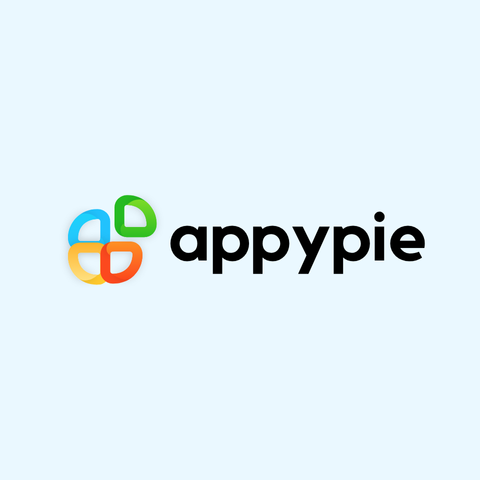
Appy Pie Website Builder
Best for Beginners and Budget-Focused Needs
- Plugins/Add-onsLimited
- Multilingual CapabilitiesMajor
- Customer SupportTicket
About Appy Pie
Appy Pie offers various tools for building websites, mobile apps, chatbots, and more. One of the tools is an AI-powered website builder that allows you to create professional websites without any coding.
Appy Pie offers 10,000+ mobile-responsive templates to create your CMS website. You get built-in e-commerce features like a shopping cart, payment processors, business emails, and more if you decide to make an online store with Appy Pie.
Appy Pie offers many free tools, such as a free domain name, hosting, business email, and a free app that matches your website to complete your brand.
Appy Pie Website Builder Features
Has a drag-and-drop website builder with a user-friendly interface.
Provides E-commerce capabilities, including online store, shopping cart, and payment processing.
Offers analytics and reporting to track website performance.
Appy Pie Website Builder Pros/Cons
Secure hosting on AWS cloud with GDPR, HIPAA, SOC, and PCI compliance.
10,000+ mobile responsive templates.
Powerful AI tools to create websites easily.
Limited customization options.
Not as many features as in a dedicated website builder.
Paid plans are expensive for more complex websites.
Appy Pie Website Builder Pricing
Appy Pie has 2 plans as have been listed below.
| Plan | Price | Offerings |
|---|---|---|
| Start | $16/mo | Basic features, unlimited bandwidth, 50GB storage, SSL certificate, 2 moderators, automatic backup, and more. |
| Grow | $36/mo | All core features, unlimited storage, advanced site customizations, advanced marketing and monetization tools, and 1000 push notifications/mo. |
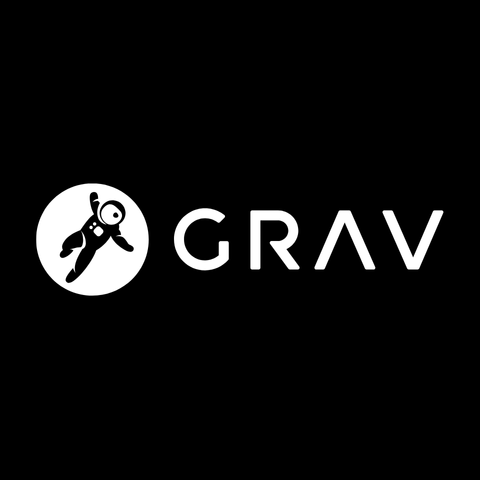
Grav
Best for Flat-File CMS and Developer Speed
- Plugins/Add-onsLimited
- Multilingual CapabilitiesUnspecified
- Customer SupportForms
About Grav
Grav is a free, open-source, and self-hosted CMS written in PHP, first released in 2014 by Trilby Media. Designed for simplicity, speed, and ease of use, Grav prioritizes performance over many built-in features.
Grav uses a flat-file database, storing content and configuration data in text files rather than requiring MySQL or PostgreSQL. This makes it easy to set up, maintain, and back up. It’s ideal for developers and website owners who value simplicity and flexibility.
Grav is lightweight and customizable, making it a cost-effective and reliable choice. Its open-source nature and large community support add to its appeal for those prioritizing speed and ease of use.
Grav Features
Provides a flat-file, database-free architecture for speed and simplicity.
Offers pre-built 50+ website skeletons are available to get started with Grav.
Has an active and engaged open-source community.
Grav Pros/Cons
Secure, as there is no admin area or database to hack into.
Uses modern technologies like Twig templating and Markdown for content creation.
Being a flat-file CMS the admin panel provides only required features.
Better suited to smaller projects and websites with a simple database and less data.
Due to a smaller community, support is limited.
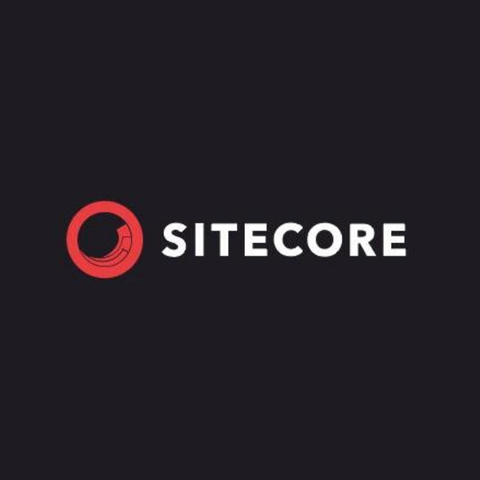
Sitecore
Best for Enterprise Personalization and Omnichannel
- Plugins/Add-onsNot disclosed
- Multilingual Capabilitiesvia Translations.com
- Customer SupportForm, Support Portal
About Sitecore
Sitecore is a leading CMS founded in 1999, serving over 10,000 customers. It delivers personalized digital experiences across web, mobile, and social media. Sitecore’s user-friendly platform allows easy content creation and management without extensive technical skills.
Sitecore’s advanced personalization tailors content based on customer data, while omnichannel capabilities ensure consistent brand experiences.
Sitecore integrates with CRM, marketing automation, and e-commerce platforms to keep customer and product information up-to-date. A/B testing and optimization identify effective strategies and built-in analytics provide valuable insights.
Sitecore offers flexible pricing for on-premises and cloud hosting, ideal for medium to large enterprises. Its scalable platform meets growing demands without sacrificing performance or security.
Sitecore Features
Offers robust security features like role-based access control, SSL encryption, and regular software updates.
Supports personalization capabilities with real-time data and analytics.
Provides marketing automation features to automate campaigns, track user behavior, and send personalized messages.
Sitecore Pros/Cons
Hybrid headless CMS offers flexibility and ease of use for marketers and developers alike.
Seamless integration via APIs.
Has a strong community of 25,000
Needs technical skills and so not suited for non-technical users.
Limited functionality for small businesses with basic requirements.

Sitefinity
Best for Marketing Automation and E-commerce Integrations
- Plugins/Add-onsVery limited
- Multilingual Capabilitiesvia Translation service
- Customer SupportPhone, Email, Form
About Sitefinity
Sitefinity is a popular CMS by Progress that enables businesses to create, manage, and deliver engaging digital experiences across multiple channels. It offers an intuitive platform for both content creators and developers, providing a comprehensive digital marketing hub for building websites, portals, and applications.
Sitefinity integrates seamlessly with customer and enterprise data, enhancing digital interactions and enabling faster development and deployment of digital experiences. The user-friendly interface simplifies content creation and management, supporting personalization and multichannel experiences.
One of Sitefinity’s standout features is Sitefinity Cloud, an enterprise infrastructure for managing and delivering customer-centric digital experiences at scale, available as both SaaS and PaaS.
Additionally, Sitefinity Insight is a native Customer Data Platform that captures customer interactions, optimizes campaign performance and facilitates data-driven decisions. The flexible framework scales with business growth and integrates with various technologies.
Sitefinity Features
Offers native e-commerce features, such as showing products, managing inventory, processing payments, and more.
Supports personalization of content based on user preferences, demographics, or previous interactions.
Provides a drag-and-drop functionality and a WYSIWYG editor.
Sitefinity Pros/Cons
AI toolset for content creation and customer experience optimization.
Powerful marketing automation features.
Active community and extensive documentation.
Very few add-ons and integrations.
Steeper learning curve if you are unfamiliar with enterprise-level CMS.
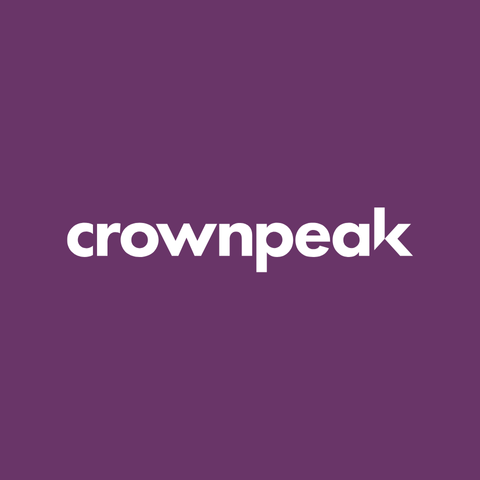
Crownpeak
Enterprise-level Digital Experience Management (DXM)
- Plugins/Add-onsvia DQM
- Multilingual CapabilitiesVery limited
- Customer SupportRequest, Support Portal
About Crownpeak
Crownpeak’s CMS, powered by FirstSpirit, streamlines content creation, optimization, and governance. Its flexible architecture supports headless APIs, static content delivery, or both and integrates seamlessly with existing digital infrastructure.
Crownpeak drives content natively to extend the life of digital touchpoints, avoiding costly rebuilds. It accelerates time to market by enabling IT and marketing teams to work in parallel, delivering content eight times faster than other providers.
Crownpeak is the only SaaS CMS with built-in digital accessibility and quality capabilities, allowing issue resolution during the editorial process. Crownpeak integrates with Dynamic Yield to create personalized customer experiences.
Designed for commerce, Crownpeak integrates with leading platforms and features an AI-powered product discovery solution to boost revenue. Its no-code visual editor and low-code developer tools offer flexibility and agility.
Crownpeak Features
Offers an intuitive, no-code visual editor.
Provides hybrid headless CMS architecture that powers omnichannel digital experiences.
Has multisite and multilingual support.
Crownpeak Pros/Cons
Personalize customer experience with Dynamic Yield.
Delivers content globally at 8x the speed of other providers.
AI-powered product discovery feature makes e-commerce easy.
The pricing structure is not transparent.
No information is available on add-ons, tool integrations, and extensions.

ButterCMS
Best API-first CMS for Developers
- Plugins/Add-onsUnspecified
- Multilingual Capabilitiesvia Localization
- Customer SupportPhone
About ButterCMS
ButterCMS is ideal for building modern, API-driven web applications. Its headless architecture separates content management from presentation, offering flexibility and scalability.
ButterCMS scales effortlessly, handling increased content and traffic without performance issues. Its robust API integrates content into any application, and multilingual support is perfect for global businesses.
ButterCMS seamlessly combines content and commerce by integrating with popular e-commerce platforms. It manages multiple websites from one interface and integrates with cloud services like AWS and Google Cloud. Built-in analytics track content performance and user engagement.
As a true headless CMS, ButterCMS enables custom, API-driven digital experiences. Widely adopted, it leverages AI and ML for content personalization and optimization. Its flexibility, real-time editing, and robust features make it a top choice for advanced content management and personalization.
ButterCMS Features
Offers a component-based architecture to create dynamic page layouts.
Has usage-based pricing plans that fit the needs of startups and medium-scale businesses.
Provides content collaboration features like version control and real-time previews.
ButterCMSPros/Cons
Headless CMS architecture empowers building omnichannel experiences.
Robust API-first integration.
Client libraries and starter kits for popular frameworks like React, Angular, and Vue.
A limited number of add-ons in the Butter marketplace.
Limitations on the number of blogs posted.
ButterCMS Pricing
ButterCMS has three pricing plans ranging from Micro to Small Business as listed in the below table.
| Plan | Price | Offerings |
|---|---|---|
| Micro | $99/mo | 3 users, 5 pages, 50 blog posts, 50 collection items, WordPress migration, and 3 roles. |
| Startup | $199/mo | Unlimited users, 50 pages, 300 blog posts, 500 collection items, components, and 3 roles. |
| Small Business | $375/mo | Unlimited users, 100 pages, 600 blog posts, 1000 collection items, 5 locales, image editor, priority support, and 3 roles. |
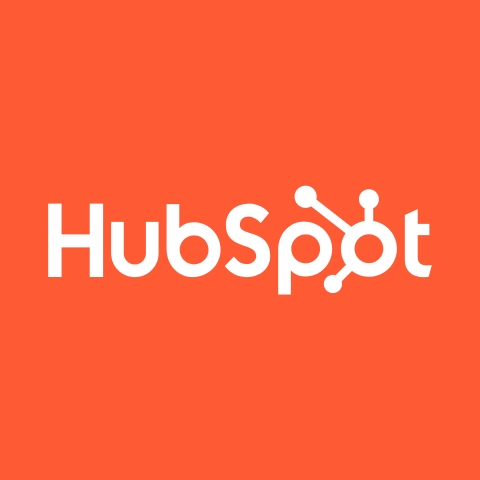
HubSpot Content Hub
Best for Integrated Marketing and CRM
- Plugins/Add-onsExtensive
- Multilingual CapabilitiesAutomatic translations
- Customer SupportPhone
About HubSpot Content Hub
HubSpot CMS Hub is a comprehensive content management system for small to medium businesses. It is built on HubSpot’s CRM platform, which includes marketing automation, sales, service, and operations tools.
The HubSpot CMS’ website builder is easy to use, even for those with minimal technical skills. Its drag-and-drop editor, built-in SEO tools, and contact attribution features simplify content creation and optimization.
HubSpot CMS’ smart content features let you personalize website pages for specific visitors or larger segments. Developers use serverless functions, flexible theme options, and command line tools for faster customization.
CMS Hub includes strong security features such as a global CDN, a Web Application Firewall, and a dedicated security team to protect against DDoS attacks and hackers. It integrates seamlessly with HubSpot’s email marketing tool and sales CRM, streamlining operational workflows.
HubSpot Content Hub Features
Offers AI blog post generator to produce topics with titles, targeted keywords, and outlines.
Comes with a global CDN and Web Application Firewall for robust security.
Has extensive pre-built themes, modules, and add-ons to build and customize your website.
HubSpot Content Hub Pros/Cons
Built-in social media and email integration.
Seamless integration with Shopify and WooCommerce for e-commerce stores.
Add up to 100 products with the free Hubspot plan.
The free version comes with Hubspot branding.
The pricing plans are expensive for individuals and smaller businesses.
Only 3 seats are included in the Professional plan.
HubSpot Content Hub Pricing
Hubspot’s pricing plans have been elaborated in the table below.
| Plan | Price | Offerings |
|---|---|---|
| Free | Free | Access to all the free HubSpot tools, 3 dashboards, add up to 100 products, 100 blog posts. |
| Starter | $15/mo/seat | Access to all paid HubSpot tools, 10 dashboards, add up to 1 million products, and 10,000 blog posts. |
| Professional | $450/mo (for 3 seats) | Access to all paid HubSpot tools, 25 dashboards, add up to 15 million products, and 10,000 blog posts. |
What Factors to Consider When Choosing a Content Management System?
When choosing a Content Management System (CMS), consider the 12 following factors:
- Ease of Use: Ensure the CMS is user-friendly, intuitive, and offers a no-code website building experience. Non-technical users should be able to create, edit, and publish content without extensive training.
- Customization and Flexibility: Look for a CMS that offers website templates, plugins, and themes to customize your site. Such templates and themes allow you to easily set up your store or website, and plugins let you add more functionalities.
- Scalability: Choose a CMS that scale with your business. It should handle increased traffic and content without affecting website speed or performance.
- SEO Features: Ensure the CMS has built-in SEO tools such as meta tags, URL structures, and keyword support to enhance your site’s visibility in search engines.
- Integration Capabilities: The CMS should integrate seamlessly with other tools and systems you use, such as CRM, e-commerce platforms, and marketing automation tools.
- Security: Security is the most important factor to consider. Ensure the CMS has robust security features, including regular updates, backups, and protection against threats.
- Multilingual Support: The CMS should support multiple languages and localization features if your business operates globally.
- Mobile Responsiveness: Ensure the CMS create mobile-friendly content and layouts. Mobile optimization is crucial for user experience and SEO.
- Cost: Consider both upfront and ongoing costs. Evaluate if the CMS offers good value for its features and if it fits your budget.
- Support and Community: Check if the CMS has strong customer support and an active user community. This is useful for troubleshooting and learning best practices.
- Content Management Features: Evaluate the CMS’s content creation, editing, and publishing capabilities. Look for features like version control, workflow management, and real-time editing.
- Performance and Speed: Ensure the CMS performs well and loads quickly. Performance affects user experience and search engine rankings.
How do CMS Platforms Support Ecommerce Functionality?
CMS platforms support e-commerce functionality either natively or via integrations. This enables businesses to manage and optimize their online stores effectively.
Here are the 10 key features and capabilities of content management systems:
- Product Management: CMS platforms allow you to add, edit, and organize products efficiently. This includes managing product descriptions, images, prices, and inventory.
- Shopping Cart and Checkout: Most CMS platforms provide built-in shopping cart and checkout systems. They ensure a smooth and secure purchase process for customers.
- Payment Gateway Integration: CMS platforms integrate with multiple payment gateways, such as PayPal, Stripe, and credit card processors. This allows businesses to offer various payment options to customers.
- Order Management: CMS platforms help manage orders from purchase to delivery. This includes tracking order status, processing returns, and handling customer inquiries.
- Customer Accounts: CMS platforms enable customers to create accounts, track orders, and save payment information. This enhances the user experience and encourages repeat purchases.
- Inventory Management: CMS platforms provide tools to track and manage inventory levels. They send alerts when stock is low and help prevent overselling.
- Mobile Responsiveness: CMS platforms ensure that online stores are mobile-friendly. This is crucial as more customers shop on mobile devices.
- Customization and Scalability: CMS platforms offer themes, plugins, and extensions to customize the online store. They scale to accommodate growing businesses and increasing traffic.
- Security: CMS platforms provide robust security features, including SSL certificates, data encryption, and fraud detection, to protect customer information and transactions.
- Integration with Third-Party Tools: CMS platforms integrate with various e-commerce platforms and third-party tools, such as CRM systems, email marketing services, and shipping providers. This creates a seamless workflow and enhances e-commerce functionality.
Is Shopify a Content Management System?
Yes, Shopify is a content management system (CMS) specifically designed for e-commerce. It allows businesses to create and manage their online stores, including product listings, inventory management, order processing, and customer interactions.
While Shopify is primarily focused on e-commerce functionalities, it provides basic content management capabilities for creating pages, blogs, and other content related to the store.
-
 EditorJoy R Bhamre is an editor at Geekflare and a Cambridge-certified business English communications trainer. She brings to the table a unique blend of language and business expertise.
EditorJoy R Bhamre is an editor at Geekflare and a Cambridge-certified business English communications trainer. She brings to the table a unique blend of language and business expertise.


